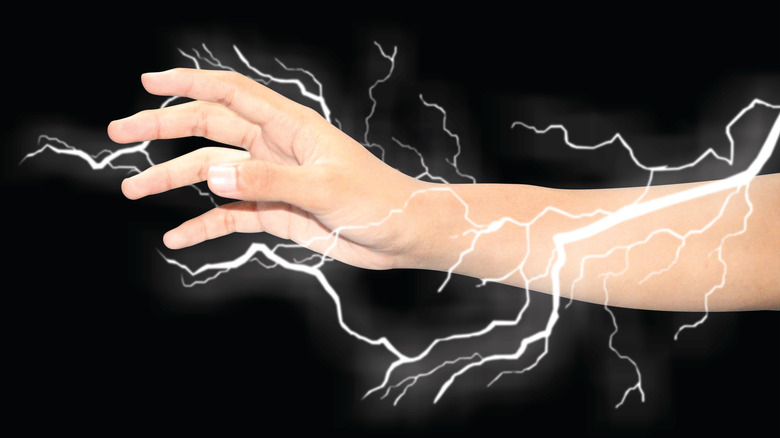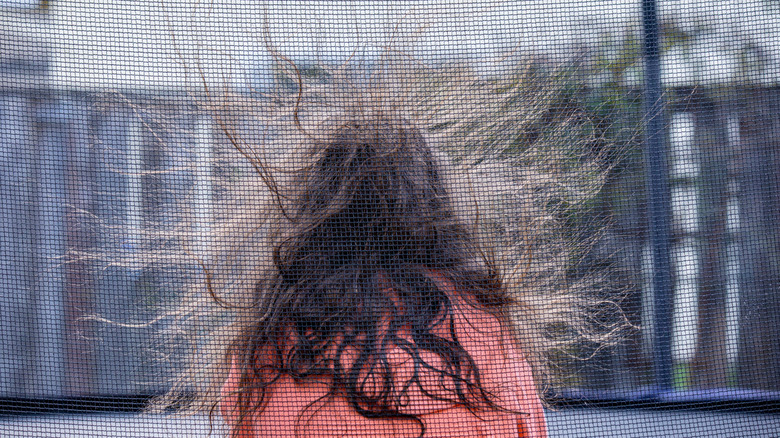Why You Get Shocked By Static More In The Winter
As a kid, it's so much fun to rub a balloon on your head to make your hair stand up. The same static electricity can build up in your hands and give you a little zap when you touch surfaces, such as door knobs and light switches. You can even transfer the shock to someone else or your animals when you touch them. While static electricity can form at any time of year, it happens more during winter because the air is colder and less humid.
The properties and characteristics of static electricity revolve around atoms and the positive and negative charges that they create. All physical matter, including the human body, is made of atoms, which consist of three basic particles — protons, electrons, and neutrons. When our bodies rub against surfaces, such as our clothes (especially when putting and taking them on and off), we lose negatively charged electrons and develop a positive charge from the remaining protons and neutrons. Upon touching a negatively charged object or being, a static discharge is released as the electrons move onto us, creating the shock that we feel.
Moisture has a huge effect on static charges and discharges because it's a natural conductor, pulling positive charges away from us. Since cold air doesn't retain as much water vapor as warm air, winter air is drier, so our bodies hold a higher positive charge. As a result, we experience more and stronger static discharges during the season.
Ways to avoid static shock in the winter
If winter static shocks are driving you crazy, you can do a few things to reduce your chances of experiencing them. In your house, for instance, the humidity is likely lower during winter than summer when your HVAC system blows in the dry air from outside without introducing moisture first. The fastest and most effective way to correct it is to use a humidifier and maintain an optimal indoor humidity of 30% to 50%, which you can monitor with a hygrometer. Without a humidifier, you can reintroduce water vapor into the air by boiling water on your stove or placing large bowls of water in each room and waiting for them to evaporate. House plants can help with maintaining indoor humidity as well.
Aside from putting humidity back into your indoor air, you can avoid certain clothing and objects to prevent static shocks during the winter. For example, wool and synthetic fabrics are insulators that allow your body to build charges, so avoid wearing clothing or using blankets made of these materials. While dryer sheets can help, choosing items made with cotton is a more ideal solution. Also, rubber is an insulator, so it's better to wear shoes with leather soles during the cold season. If you know that your body is all charged up, you can get rid of the static electricity by touching something metal. This step is particularly important before you touch the nozzle at a fuel pump to prevent a spark while getting gas.

